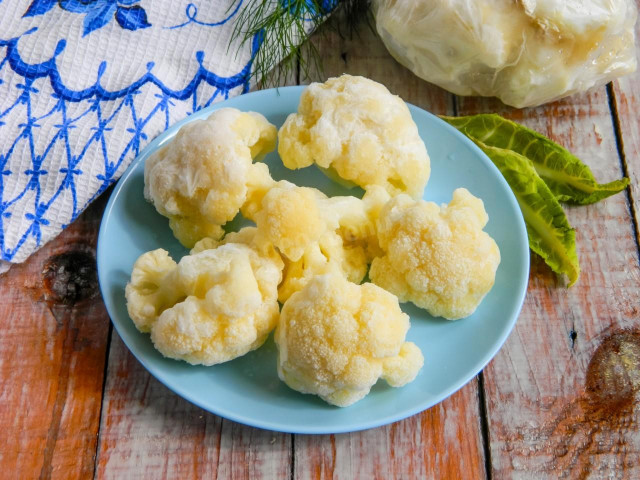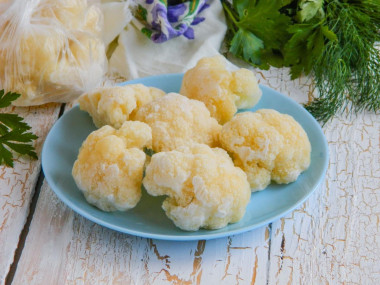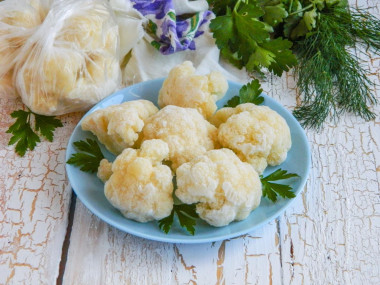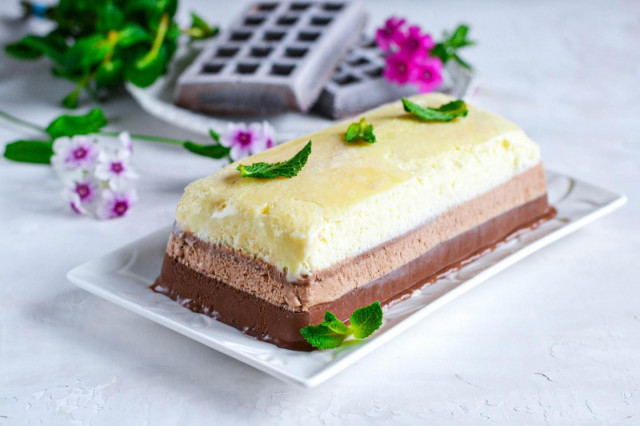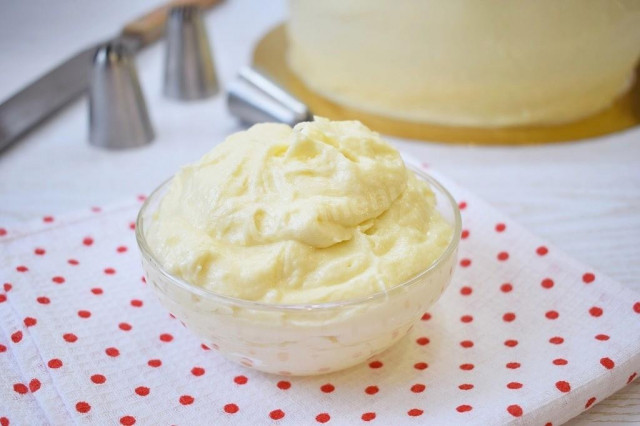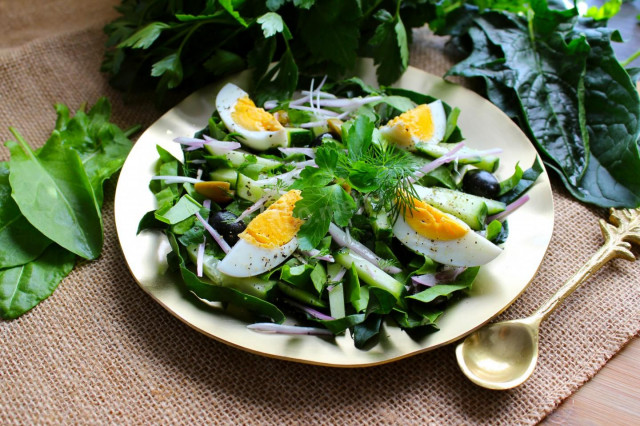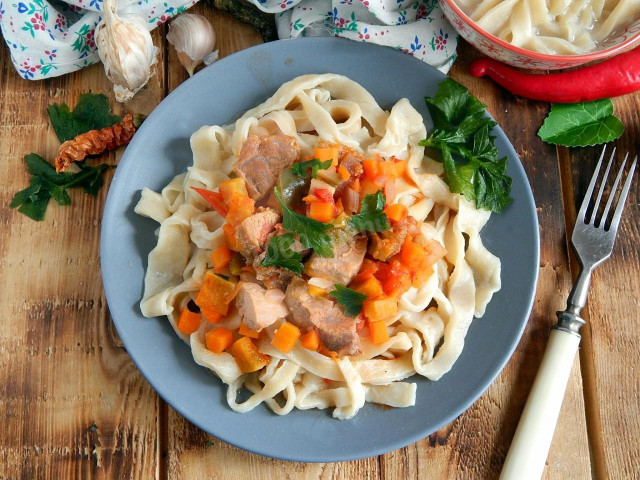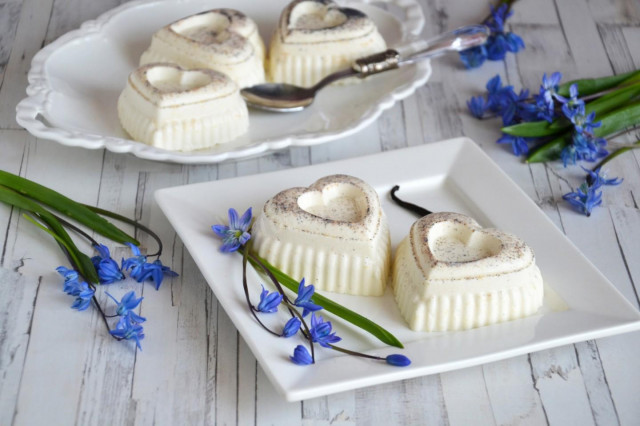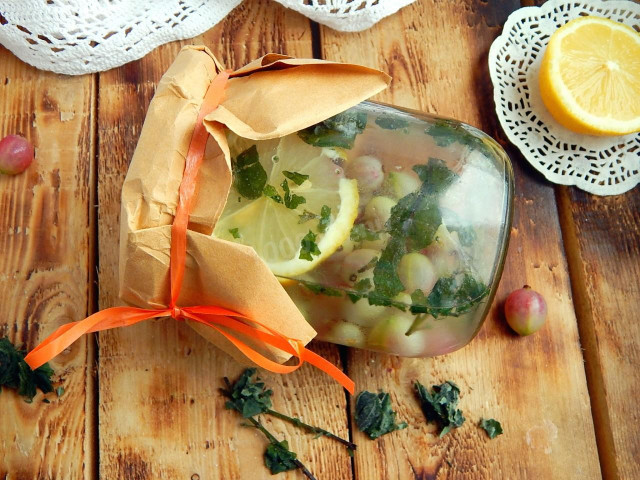Composition / ingredients
Step-by-step cooking
Step 1:
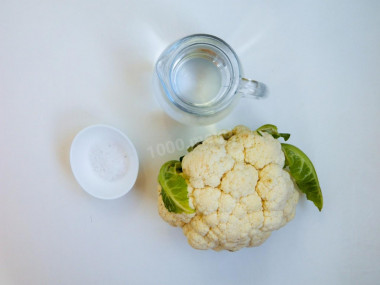
How to freeze cauliflower for winter? For freezing, take the freshest cabbage. It should be without dark spots and damage, and the leaves should fit snugly to the head. If you are in doubt which of the externally identical heads to choose, take the one that is heavier. It will be more juicy and delicious.
Step 2:
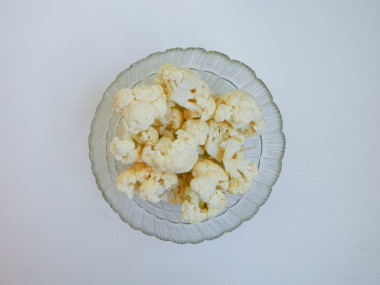
Rinse the cabbage under running water and remove all the leaves. With a sharp knife, disassemble it into inflorescences, cutting them off from the hard trunks of cabbage. For convenience, leave the inflorescences about the same size, depending on what dishes you will use it for. For soup-puree or side dish, you can make it larger, for casseroles and fillings - smaller.
Step 3:
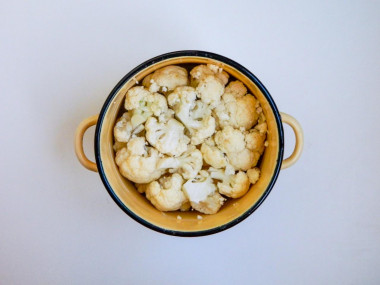
Small insects can hide in cabbage. To wash them, make a saline solution. In a deep container, dissolve salt in cold water at the rate of 1 tablespoon per 1 liter of water. Lower the inflorescences into the solution for 15-20 minutes. Insects, if there are any, will float to the surface.
Step 4:
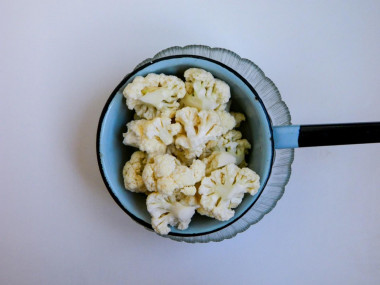
Then rinse the cauliflower thoroughly under running water and leave to drain in a colander.
Step 5:
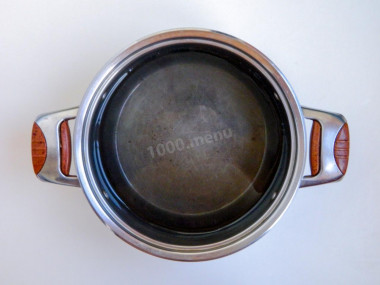
Pour water into a saucepan, put on a high heat and bring to a boil. While the water is boiling, prepare a large container with ice water. You can put a few ice cubes in it to keep the temperature.
Step 6:
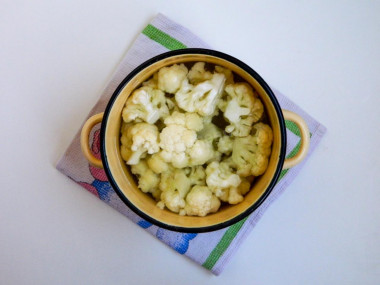
When the water boils, lower the cabbage inflorescences into it and boil for 3 minutes.
Step 7:
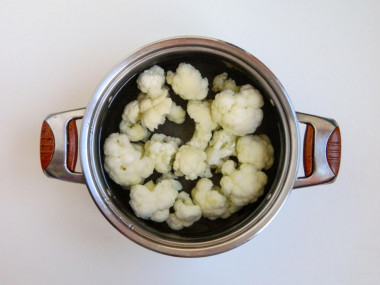
Then quickly remove and transfer to ice water for about 3 minutes. You can cool the cabbage in another way, for example, put it on ice or pour cold water over it. The main thing is to cool quickly. This heat treatment is called blanching, when vegetables are first dipped into boiling water, and then into very cold water. This allows you to preserve the color, taste and crispness of cauliflower. If this is not done, the cabbage will darken and lose its taste when frozen.
Step 8:
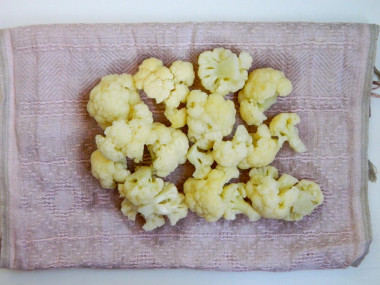
Put the cabbage blossoms on a dry cotton towel. Leave for 1-1.5 hours in order to drain all the excess liquid.
Step 9:
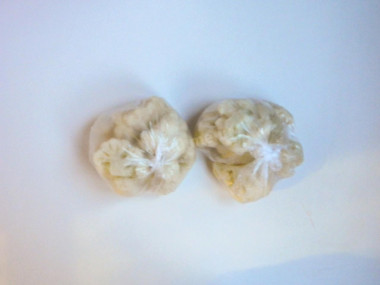
Arrange the cabbage into packages or containers for freezing. Put it in the freezer on the shelf for freezing and turn on the freezing mode or minimum temperature. With a gradual decrease in temperature, ice may form inside the blanks, which will worsen their taste after defrosting. I put -23 degrees. And after a few hours I set a constant temperature for storage -19.
Cauliflower frozen in this way is stored in the freezer at a temperature no higher than -18 degrees for 6 months without loss of quality. To prepare dishes from it, preliminary defrosting is not required. In the same way, you can freeze not only cauliflower, but also broccoli and string beans. Since these vegetables are perfectly combined, you can make frozen assorted from them.
It is very convenient to make labels on packages with home freezing, where to indicate what is frozen, when and the weight of the frozen product (write with a pencil, since ink from the pen may leak). So you will surely know the shelf life and will easily find in a full freezer what you need and in the right amount.
Caloric content of the products possible in the composition of the dish
- Cauliflower - 28 kcal/100g
- Water - 0 kcal/100g
- Table salt - 0 kcal/100g

